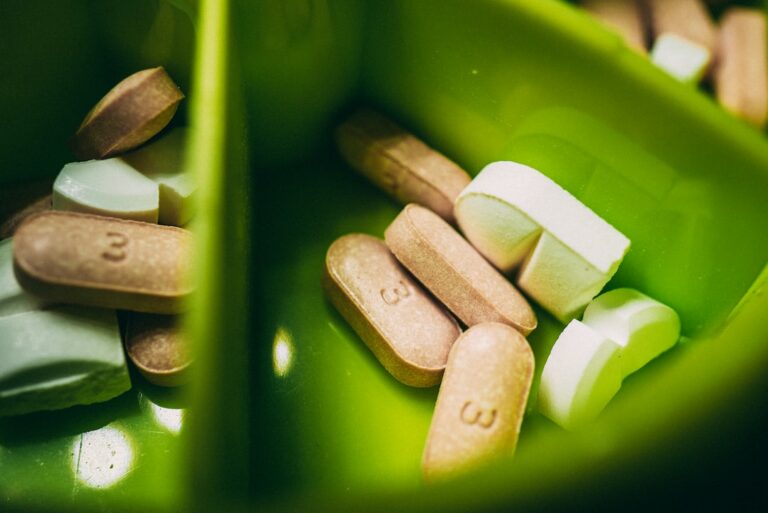Introduction
Definition of herbal remedies
Herbal remedies are natural plant-based treatments that have been used for centuries to promote health and well-being. They are derived from various parts of plants, including leaves, stems, flowers, and roots, and are often prepared in the form of teas, tinctures, or capsules. Herbal remedies are believed to work by harnessing the healing properties of plants and their active compounds. They are commonly used to address a wide range of health conditions, such as digestive disorders, respiratory infections, and skin problems. Unlike antibiotics, which are synthetic drugs designed to kill or inhibit the growth of bacteria, herbal remedies take a holistic approach to healing and aim to restore balance and harmony to the body. Some of the most commonly used herbal remedies include echinacea, garlic, ginger, and turmeric. These natural alternatives have gained popularity in recent years due to their perceived effectiveness and minimal side effects.
Definition of antibiotics
Antibiotics are a type of medication used to treat bacterial infections. They work by killing or inhibiting the growth of bacteria in the body. The strongest antibiotic for bacterial infections is often prescribed for severe cases where other antibiotics have failed to be effective. These powerful medications can target a wide range of bacteria and are essential in combating life-threatening infections. However, it is important to note that antibiotics should be used judiciously and only when necessary, as their overuse can lead to antibiotic resistance. It is always best to consult with a healthcare professional for guidance on the appropriate use of antibiotics.
Comparison between herbal remedies and antibiotics
Herbal remedies using spices have been gaining popularity as an alternative to antibiotics in recent years. These natural remedies harness the power of various spices to promote healing and boost the immune system. Unlike antibiotics, which can have side effects and contribute to the development of antibiotic resistance, herbal remedies offer a more holistic approach to treating infections and illnesses. The use of spices such as turmeric, ginger, and garlic in herbal remedies provides anti-inflammatory, antimicrobial, and antioxidant properties, which can help fight off infections and support overall health. Additionally, herbal remedies often have fewer negative interactions with other medications, making them a safer choice for many individuals. While antibiotics have their place in modern medicine, the increasing interest in herbal remedies using spices highlights the desire for more natural and sustainable healthcare options.
Benefits of Herbal Remedies

Natural ingredients
Natural ingredients play a crucial role in the world of healthcare. They provide an alternative approach to traditional medicine and offer a range of benefits. One of the key natural ingredients that has gained significant attention is fruit. Fruits are packed with essential vitamins, minerals, and antioxidants that can support overall health and well-being. Additionally, fruit-based remedies have been used for centuries in various cultures as a natural medicine. These remedies harness the power of fruits to treat common ailments and promote healing. Incorporating fruit into our daily diet and exploring its medicinal properties can be a valuable addition to our healthcare routine.
Reduced side effects
Reduced side effects
When it comes to treating infections, one of the main concerns is the side effects caused by antibiotics. However, natural remedies for superbugs offer a promising alternative. These remedies, derived from plants and herbs, have been used for centuries in traditional medicine. They are known for their antimicrobial properties, which can help fight against antibiotic-resistant bacteria. By opting for natural remedies, individuals can potentially reduce the risk of experiencing adverse effects commonly associated with antibiotics. Moreover, natural remedies often have fewer interactions with other medications, making them a safer choice for individuals with multiple health conditions. Therefore, considering natural remedies for superbugs can not only be effective in treating infections but also help minimize the negative impact of antibiotics on the body.
Support for the immune system
Support for the immune system is crucial for maintaining overall health and well-being. While antibiotics have long been the go-to solution for treating infections, there is growing interest in exploring the benefits of herbal remedies. Natural healing methods, such as herbal remedies, have been used for centuries to support the immune system and promote wellness. These remedies, derived from plants and other natural sources, are believed to work in harmony with the body, helping to strengthen the immune response and restore balance. By harnessing the power of nature, individuals can take a proactive approach to their health and support their immune system naturally.
Effectiveness of Herbal Remedies

Scientific studies on herbal remedies
Scientific studies have shown that herbal remedies have the potential to improve health naturally. These remedies, derived from plants and natural sources, have been used for centuries by various cultures around the world. They offer a holistic approach to wellness, focusing on treating the root cause of ailments rather than just alleviating symptoms. Herbal remedies have been found to possess antimicrobial properties, making them effective against certain infections. Furthermore, they often have fewer side effects compared to antibiotics, which can cause adverse reactions in some individuals. Incorporating herbal remedies into one’s healthcare routine can provide an alternative to conventional medicine and promote overall well-being.
Conditions that can be treated with herbal remedies
Herbal remedies have been used for centuries to treat a wide range of conditions. One such condition that can be effectively treated with herbal remedies is renal support. Chamomile tea has been found to have properties that can support renal health and function. Studies have shown that chamomile tea can help reduce inflammation in the kidneys and improve overall kidney function. Additionally, chamomile tea has been found to have diuretic properties, which can help promote urine production and eliminate toxins from the body. Therefore, chamomile tea can be a beneficial herbal remedy for individuals looking to support their renal health.
Limitations of herbal remedies
While herbal remedies have been used for centuries to treat various ailments, they do have some limitations. One major limitation is the lack of scientific evidence to support their efficacy. Unlike antibiotics, which undergo rigorous testing and clinical trials, herbal remedies often lack the same level of scientific scrutiny. This means that the effectiveness and safety of herbal remedies are not always well-established. Additionally, the potency and quality of herbal remedies can vary greatly, as they are often produced and sold without regulation. This lack of standardization can make it difficult to determine the appropriate dosage and ensure consistent results. Furthermore, herbal remedies may not be suitable for all individuals, especially those with pre-existing medical conditions or who are taking certain medications. It is important to consult with a healthcare professional before using herbal remedies as an alternative to antibiotics.
Benefits of Antibiotics

Targeted treatment of bacterial infections
Targeted treatment of bacterial infections involves the use of antibiotics, which are medications specifically designed to kill or inhibit the growth of bacteria. Antibiotics work by targeting specific components or processes within bacteria, such as their cell walls or protein synthesis. This approach allows for a focused and effective treatment of bacterial infections. While holistic medicine, including herbal remedies, has gained popularity in recent years, it is important to note that antibiotics remain the gold standard for treating bacterial infections due to their targeted nature and proven effectiveness.
Fast-acting results
Herbal remedies have gained popularity as an alternative to antibiotics due to their perceived natural and holistic approach to healing. However, when it comes to fast-acting results, antibiotics still hold the upper hand. Pfizer, a renowned pharmaceutical company, has developed effective antibiotics that can provide rapid relief from various bacterial infections. These antibiotics have undergone rigorous testing and are proven to be highly effective in treating a wide range of illnesses. While herbal remedies may offer certain benefits, such as fewer side effects and a gentler approach, they often lack the immediate and targeted action that antibiotics provide. In the case of Pfizer’s depression treatment, their medication has shown promising results in alleviating symptoms and improving overall mental well-being. With Pfizer’s commitment to research and development, their antibiotics continue to be a trusted choice for fast-acting and reliable treatment.
Proven effectiveness
Herbal remedies have been used for centuries to treat various ailments, but are they really more effective than antibiotics? In recent years, there has been a growing interest in natural alternatives to traditional medicines. One area of interest is natural mercury detox, which refers to the process of removing mercury from the body using natural remedies. Studies have shown that certain herbs and supplements can help eliminate mercury from the body, reducing the risk of mercury toxicity. However, it is important to note that herbal remedies may not be as effective as antibiotics in treating bacterial infections. Antibiotics are specifically designed to target and kill bacteria, while herbal remedies may have a more general effect on the body’s immune system. Therefore, it is crucial to consult with a healthcare professional before relying solely on herbal remedies for treating infections or detoxifying the body.
Risks and Side Effects of Antibiotics

Development of antibiotic resistance
The development of antibiotic resistance is a growing concern in the field of medicine. Antibiotics have been widely used for the treatment of bacterial infections, but over time, bacteria have evolved and developed mechanisms to resist the effects of these drugs. This has led to a decrease in the effectiveness of antibiotics and an increase in the prevalence of antibiotic-resistant infections. The misuse and overuse of antibiotics have contributed to the development of resistance, as well as the natural ability of bacteria to adapt and survive in different environments. It is important to find alternative treatments and strategies to combat antibiotic resistance and ensure the continued effectiveness of antibiotics in the future.
Disruption of gut microbiota
The disruption of gut microbiota is a significant concern when considering the use of herbal remedies as an alternative to antibiotics. The gut microbiota, which consists of trillions of microorganisms, plays a crucial role in maintaining overall health and immune function. Antibiotics are known to disrupt the balance of these microorganisms, leading to negative health effects such as increased susceptibility to infections and digestive issues. While herbal remedies may offer potential benefits in treating certain ailments, their impact on the gut microbiota is not well understood. It is important to consider the potential risks and benefits of herbal remedies compared to antibiotics, especially in cases where the disruption of gut microbiota can have long-term consequences.
Allergic reactions
Allergic reactions to herbal remedies are rare, but they can occur in some individuals. It is important to note that not all herbal remedies have undergone rigorous testing for safety and efficacy. Therefore, it is recommended to consult with a healthcare professional before using any herbal remedy, especially if you have a known allergy or sensitivity to certain plants or substances. Additionally, individuals with a history of allergic reactions should be cautious when using herbal remedies that have not been certified as organic, as they may contain potential allergens or contaminants. Organic certification ensures that the herbal remedy has been produced without the use of synthetic pesticides, fertilizers, or genetically modified organisms (GMOs), reducing the risk of allergic reactions and promoting overall health and well-being.
FAQ (Frequently Asked Questions)
Are herbal remedies safe for everyone?
Herbal remedies have gained popularity in recent years as an alternative to conventional medicine. However, it is important to consider whether these natural medicines are safe for everyone. While herbal remedies can offer potential benefits, it is crucial to understand that they may not be suitable for everyone. Certain individuals may have allergies or sensitivities to specific herbs, which could lead to adverse reactions. Additionally, herbal remedies may interact with certain medications, making them potentially unsafe for individuals who are taking prescription drugs. Therefore, it is important to consult with a healthcare professional before incorporating herbal remedies into your healthcare routine. By doing so, you can ensure that you are using natural medicines in a safe and effective manner.
Can herbal remedies be used alongside antibiotics?
Herbal remedies have been used for centuries to treat various ailments and infections. However, when it comes to using herbal remedies alongside antibiotics, caution should be exercised. While some herbal remedies may have antimicrobial properties that can complement the effects of antibiotics, it is important to consult with a healthcare professional before combining the two. This is because the interactions between herbal remedies and antibiotics can vary and may have unintended consequences. Additionally, some herbal remedies may interfere with the effectiveness of antibiotics or cause adverse reactions. Therefore, it is crucial to seek medical advice to ensure the safe and effective use of herbal remedies alongside antibiotics.
Can herbal remedies replace antibiotics?
Herbal remedies have gained popularity as an alternative to antibiotics in recent years. Many people are turning to these natural remedies in search of a more holistic approach to healthcare. However, it is important to note that herbal remedies cannot completely replace antibiotics. While they may offer certain benefits, such as fewer side effects and a lower risk of antibiotic resistance, they are not as effective in treating serious bacterial infections. Antibiotics are specifically designed to target and kill bacteria, whereas herbal remedies may only have mild antibacterial properties. It is crucial to consult with a healthcare professional before making any decisions about using herbal remedies as a substitute for antibiotics.







































